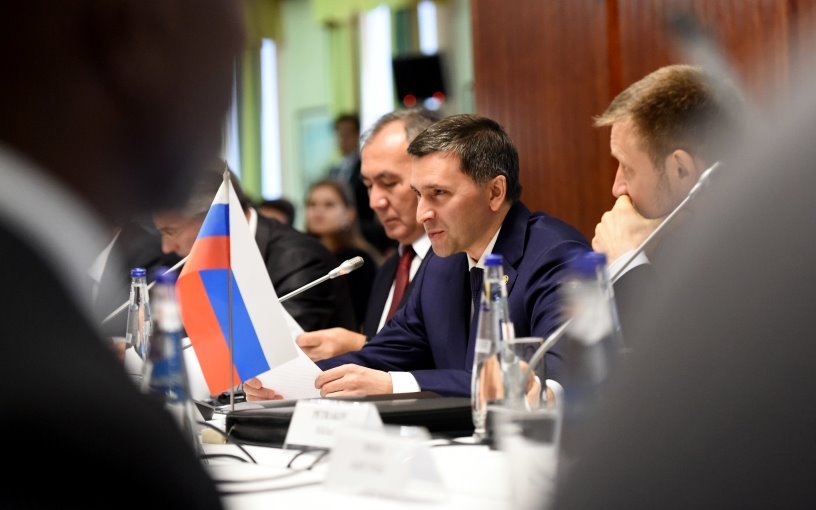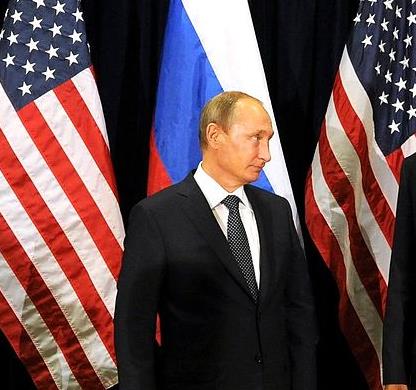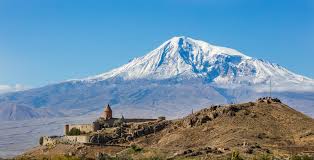(PONARS Eurasia Policy Memo) At the end of September, local news outlets began reporting on the increasing number of dead sea creatures washing up on Khalaktyrsky beach in the Far Eastern region of Kamchatka. It soon became apparent that there had been some sort of toxic leak into the sea and numerous theories started to circulate as to where it originated. Although the investigation of the incident is ongoing, the authorities’ chaotic response revealed a great deal, not only about Russia’s environmental policies but also about the way in which responsibility and accountability work. More fundamentally, the Kremlin’s management of environmental issues illustrates the deficiencies in Russia’s political system, where regional governors are left to handle major incidents but lack the funding, coordination skills, or organizational responsibility to see them through. It also exposes the strong links between Russia’s environmental strategy and defense and security-related agencies , such as the competition between the Ministries of Defense, Energy and the Environment, as well as the OMON (riot police), the Security Council, and important business lobbying groups who all have a stake in environmental policies. These organizational issues and the enduring link between ecology and defense are likely to dictate Russia’s future responses to important climate change issues. This moves Russia onto an “emergency” footing when tackling environmental problems, which may give security agencies carte blanche to respond more readily with force.
The Veneer of Productivity
The incident in Kamchatka unfolded like many environmental disasters in Russia. First, the usual initial reporting from local sources, including social media posts and complaints posted to online forums, came to broader public attention in a piecemeal manner. Second, denials of any kind of pollution followed from regional official sources, including the military, followed by overwhelming evidence to the contrary published in the Russian press by independent sources. A few days later, on October 7, Russia’s Investigative Committee announced that it had opened a criminal case into the incident, and a flurry of activity began.
Minister for Natural Resources and the Environment Dmitry Kobylkin played down the seriousness of the incident, maintaining that no one had been killed or became seriously ill, and insisted the spillage was unlikely to have been man-made. The regional branch of the Ministry of Natural Resources in this vein published a video of the Khalatkyrsky beach, defiantly showing that the water was clear. Early on, the local Prosecutor’s Office had begun an inquiry into the pollution to determine the cause, and Kamchatka’s regional governor Vladimir Solodov set up a working group, which included representatives of Greenpeace and the World Wildlife Fund, also to establish the cause of the incident. Then Yuri Trutnev, President Vladimir Putin’s influential envoy to the Far East—himself a former minister for the environment from 2004-12—ordered the establishment of a task force that included the Kamchatka regional authorities, Rosprirodnadzor (the watchdog that oversees, among other things, licenses for natural resource extraction), and the fisheries agency to investigate the situation and identify those responsible.
All of this gives the illusion of useful activity. But it was not clear who was coordinating all these different investigations, many of whose activities were overlapping, and all of which offered divergent theories about the pollution—from rocket fuel leaks to an algae bloom. Putin limited his role to expressing muted concern about damage to the environment, reflective of his disinterest. His spokesman, Dmitry Peskov, announced more than a week after the incident that there was a “clear direction” in place to investigate the causes, but that seemed to reinforce the fact that there was no obvious leader taking charge.
Reactive, not Proactive
The response to the Kamchatka incident reveals some of the problems in how Russia handles strategic and emergency environmental planning. It lays bare some of the Kremlin’s organizational struggles for control but also reflects a federal-wide unwillingness to take responsibility for overall coordination. This scramble for a response and reluctance to shoulder responsibility for coordinating increasingly routine issues was exemplified in another recent environmental incident. In May 2020, a large oil spill in the northern city of Norilsk leached into rivers and subsoil, resulting in damages of around $1.8 billion.
The main issue there was poor communication—not just between regional and federal agencies, but among the plant responsible for the leak, the emergency services, and ultimately between all of these offices and the president, resulting in Putin’s extreme displeasure. It subsequently came to light that regional officials had known of the spill much earlier than they had later claimed and had not offered aid to those cleaning up the incident in a timely manner, subsequently attempting to shift blame onto other agencies. It was only after Putin’s personal intervention that action was taken, indicating serious problems with the management of emergency situations.
The authorities’ responses to emergency incidents in Norilsk and Kamchatka are indicative of the Kremlin’s approach to other environmental disasters, particularly those prompted by climate change. As Russia experiences its warmest September in recorded history, frequent wildfires in summer, and flash flooding that causes billions of rubles of damage annually, it is becoming harder to deny the impact of climate change on the country. The authorities have been forced to confront the inevitable, and there are technically several official strategies in place that govern Russia’s environmental policy, but some are more effective than others.
Is There a Plan?
The Ministry of Natural Resources is responsible for the protection of Russia’s raw materials and the environment, as well as pollution control, and oversees and coordinates five other agencies tasked with water resource management, forestry, and environmental monitoring.
There are also strategy documents that lay out Russia’s official stance on the environment. In 2012, the Ministry of Natural Resources adopted a new environmental protection program, scheduled to last until 2030. The Ministry oversees its development, but it includes the participation of others such as the Ministry of Industry and Trade. As well as protecting Russia’s biological diversity and wildlife, reducing pollution and CO2 emissions, there are specific programs in place to protect Lake Baikal and organize research and development work in places such as Antarctica—a lesser-researched area of Russia’s political interests.
But while these strategy documents suggest a commitment to a green economy, Russia’s approach to climate change and environmental issues is mixed, and there are many political and business players who have major influence over the country’s policy direction here. Russia ratified the Paris climate agreement only very recently, in 2019, in a bid to reduce greenhouse gasses, but its commitment to the cause is questionable. Critics have maintained that signing the agreement gives Moscow an excuse to appear active on climate change issues while doing little to reduce the production of its own natural resources, upon which the economy still depends.
Other strategy documents seem to reinforce this view. Russia’s Concept for Long-Term Socio-Economic Development to 2020 was adopted in 2008 by the Ministry of Trade, which highlighted Russia’s over-dependence on energy exports. Although the strategy is focused on technology and attempts to diversify the economy, it was clear that Russia’s resource-based development model and hydrocarbon production would remain high, which runs counter to other environmental strategies to reduce CO2 emissions.
The activities of the Ministry of Energy also chime with this approach. In July 2020, the Ministry held its annual board meeting, which had been postponed by the coronavirus, in which hydrocarbon and coal production was slated to remain high, particularly the export of LNG and the construction of new pipelines. This indicates Russia’s strategic intent to remain reliant on natural resources, regardless of the environmental cost of their production and extraction. This is seemingly at odds with fact-based missives from the Ministry of Natural Resources, which in 2019 released a report warning of the dangers of climate change, thawing permafrost, and rising sea levels, the results of which were widely disseminated in the Russian media at the time.
But alongside the Ministry of Energy, there is significant pressure from lobbyists in key industries such as oil, gas, and coal to maintain high production and export levels. This makes decision-making on environmental issues challenging. The powerful Union of Industrialists and Entrepreneurs (RSPP), a large business lobby, has frequently pressed the government to increase the production of natural resources with the view that profits from these industries could only then be used for technological innovation to promote a greener economy. The RSPP, in conjunction with the Ministry of Energy, was able to reverse planned legislation that would have reduced investment in natural resource production and introduced quotas on carbon emissions. Instead, the RSPP was able to water down the legislation, resulting in a “climate audit” for some businesses, which had little positive environmental impact. The RSPP represents a group of powerful businesspeople, many of whom are from the hydrocarbons sector.
There are other pockets of activity on environmental measures, which give the impression of interest and some commitment to addressing the issue. Putin oversees the Human Rights Council—a consultative body that advises the president on human rights issues—which in 2019 proposed introducing some carbon emission measures on vehicles to combat air pollution in densely populated areas like Moscow and St. Petersburg. This was an initiative supported by the influential Mayor of Moscow, Sergei Sobyanin, which at first seemed like a step in the right direction. But, as organizations such as Greenpeace have pointed out, any new environmental initiatives must be supported by accompanying infrastructure, such as greater investment in alternative public transport or bicycles, proposals that so far have not been rolled out across the country by the federal government.
All these organizations, whose aims run counter to one another as they pursue their own interests, have contributed to Russia’s unclear stance on the environment and have stymied genuine attempts to address the problem.
Increasing Securitization
But as environmental disasters become more frequent, Russia will be forced to develop more concrete contingency plans to reduce the risks to civilians. Absent a coordinated strategic approach for dealing with environmental issues, it is clear that Russia’s responses are becoming more securitized, which might result in knee-jerk and potentially more violent actions in response.
Certain senior governmental positions on environmental issues highlight this link to security. Sergei Ivanov is the president’s special representative on the Environment and Transport, a position he has held since 2016. He is a former Minister of Defense (2001-07) and served in the KGB for many years in the foreign intelligence division, and as secretary of Russia’s Security Council in the early years of Putin’s leadership. His high-profile intelligence and security background, and his rotation to Environmental Minister, indicates the importance with which Putin’s administration accords this office, given Russia’s reliance on the production and export of its natural resources for the security of its political economy. But his move to the Environmental and Transport agency also indicates the close links in the Russian government between the environment and defense.
In this capacity, Ivanov oversees environmental protection, ecology, and transport, and has in the past talked about the importance of protecting biodiversity and introducing fees on companies that damage the environment. He is also keen to develop Russia’s Far East and its business environment by improving its transport infrastructure, and has pointed out that Russia ought to reduce its dependence on raw materials and protect the environment, which seems at odds with the calls from the business lobby and the Ministry of Energy.
But Ivanov’s position might suggest a trend towards emergency and contingency planning on environmental issues. This has a number of important implications in Russia. It could imply a role for other security actors, such as the Ministry of Emergency Situations (MChS) or the Ministry of Defense, who may be tasked with more actively addressing immediate threats or quelling protest action related to the environment. In some incidents, this has already occurred. OMON (riot police) officers were deployed in 2019 to counter the growing environmental protests in Shiyes, Arkhangelsk (in the north), which had criticized the Kremlin’s decision to open a large landfill site near their city to accept waste from the Moscow region. This highlighted the government’s mindset, that environmental protests had become a political issue that threatened stability, and therefore security, requiring a hard security response in return.
The securitization of this office could also suggest something about how environmental threats in Russia are assessed, why some may be considered more urgent than others, as well as gauging the importance of who or what deserves to be protected, and by whom. Inevitably, this may throw up more complex issues. As “urgent” situations become the focus of environmental policy, this might permit more exceptional measures—snap judgments rather than strategic planning, or law-breaking in the name of protection.
There are other examples of this decision-making emerging in practice. Most recently, in August 2020, environmental activists in Bashkortostan (a region east of Moscow) clashed with workers at a chemical plant, which was attempting to develop a protected natural resource site on a hill. The OMON again was deployed and intervened with force to quell the protests, although they were peaceful, there were very few demonstrators, and they were not posing a threat to public order—a point that the authorities later conceded to, standing down their officers.
This willingness from the authorities to use violence against peaceful protesters is not in itself new or specific to the environment but reflects the growing divide between official rhetoric on the importance of protecting the environment, the activists who consider themselves the guardians of ecological protection, and the officers deployed to subdue them as they carry out this task.
Conclusion: Political Solutions for Practical Problems
The Kremlin is becoming aware that it must do more to address environmental issues than empty policy documents or statements. But instead of making practical moves to invest in alternative sources of electricity, the Kremlin seems to view environmental problems as a local issue, which could be addressed by regional governments and agencies.
Structures close to the Kremlin have been playing a much more visible role in environmental issues in the past few months. The All-Russia People’s Front (ONF), an organization that Putin set up ahead of his 2012 presidential re-election campaign to submit ideas on future policies, has taken on the public face of many local environmental issues. Although the ONF’s visibility declined after Putin’s resumption of the presidency in 2012, its presence has resurged in recent months, with the appointment of the young Mikhail Kuznetstov as chairman of its executive committee.
The recent victory of many ONF activists in elections to regional and municipal councils in this past September’s elections seems to have tapped into local concerns about environmental violations. During the elections, ONF activists positioned themselves as defenders of local issues such as protecting reduced water levels in lakes in Bashkortostan. Voters seemed to approve, as many activists won seats as a result. This demonstrated to the Kremlin the kinds of policies that the incumbent United Russia party will need to work on to improve its highly toxic image. It may provide useful data that can feed into the party’s future environmental policy strategies.
Closer links between the environment and security might create new roles for organizations like the ONF. Given the ONF’s overtly patriotic agenda and promotion of traditional Orthodox Christian values, they may oversee an increase in nationalistic sentiment in defense of nature. The ONF’s new-found activism also has the added bonus of deflecting some responsibility for environmental problems onto a regional (and Kremlin-loyal) group, whose activities the Kremlin can be seen to visibly support. This would give the veneer of government-sponsored activity on environmental issues while maintaining industrial practices that are high in pollutants.
Ultimately, the lack of coordination between environmental agencies, confusion over responsibility for tasks, and the influence groups pushing back against legislation to promote greener practices—all in the face of an increasingly evident climate change problem—will likely drive the Kremlin towards fire-fighting measures, rather than strategic planning. The treatment of environmental change as a security issue, and the presumption of an existential threat to Russia, is more likely to result in hard security solutions, which may not be appropriate for tackling the true problem. With this mindset, Russia’s political community risks prioritizing less important issues—such as countering small-scale protests—while marginalizing fundamental environmental problems.
Emily Ferris is a Research Fellow at the Royal United Services Institute (RUSI), United Kingdom.
[PDF]











